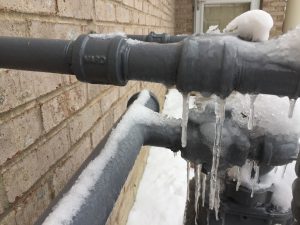Preventing Frozen Pipes in Cold Weather: Pro Advice
Preventing Frozen Pipes in Cold Weather: Pro Advice
Blog Article
Right here down the page you might get additional high-quality resources on the subject of Prevent Frozen Pipes .

Cold weather can damage your plumbing, especially by freezing pipes. Below's exactly how to prevent it from occurring and what to do if it does.
Intro
As temperature levels drop, the danger of frozen pipes increases, possibly leading to pricey repair services and water damages. Understanding just how to avoid icy pipelines is critical for house owners in cold climates.
Avoidance Tips
Insulating susceptible pipes
Wrap pipes in insulation sleeves or utilize warmth tape to protect them from freezing temperatures. Concentrate on pipes in unheated or exterior locations of the home.
Heating strategies
Keep indoor spaces adequately heated up, especially locations with pipes. Open cupboard doors to permit warm air to distribute around pipelines under sinks.
How to determine icy pipelines
Seek decreased water flow from faucets, unusual odors or noises from pipes, and visible frost on exposed pipes.
Long-Term Solutions
Structural adjustments
Consider rerouting pipes away from outside wall surfaces or unheated locations. Include extra insulation to attic rooms, cellars, and crawl spaces.
Updating insulation
Buy top notch insulation for pipes, attic rooms, and walls. Proper insulation helps keep consistent temperatures and minimizes the threat of frozen pipes.
Safeguarding Outdoor Plumbing
Yard hoses and outdoor faucets
Disconnect and drain pipes yard pipes before winter. Set up frost-proof faucets or cover outdoor taps with insulated caps.
Comprehending Icy Pipes
What triggers pipelines to ice up?
Pipes freeze when subjected to temperature levels below 32 ° F (0 ° C) for prolonged periods. As water inside the pipelines ices up, it increases, taxing the pipe walls and potentially causing them to burst.
Risks and damages
Frozen pipes can result in water system interruptions, residential or commercial property damage, and expensive repairs. Ruptured pipelines can flooding homes and trigger comprehensive structural damages.
Indications of Frozen Pipeline
Identifying icy pipes early can stop them from breaking.
What to Do If Your Pipes Freeze
Immediate activities to take
If you suspect frozen pipes, keep taps open up to ease stress as the ice melts. Utilize a hairdryer or towels soaked in hot water to thaw pipes slowly.
Final thought
Stopping frozen pipes calls for positive steps and fast responses. By recognizing the reasons, indicators, and safety nets, home owners can safeguard their plumbing throughout cold weather.
5 Ways to Prevent Frozen Pipes
Drain Outdoor Faucets and Disconnect Hoses
First, close the shut-off valve that controls the flow of water in the pipe to your outdoor faucet. Then, head outside to disconnect and drain your hose and open the outdoor faucet to allow the water to completely drain out of the line. Turn off the faucet when done. Finally, head back to the shut-off valve and drain the remaining water inside the pipe into a bucket or container. Additionally, if you have a home irrigation system, you should consider hiring an expert to clear the system of water each year.
Insulate Pipes
One of the best and most cost-effective methods for preventing frozen water pipes is to wrap your pipes with insulation. This is especially important for areas in your home that aren’t exposed to heat, such as an attic. We suggest using foam sleeves, which can typically be found at your local hardware store.
Keep Heat Running at 65
Your pipes are located inside your walls, and the temperature there is much colder than the rest of the house. To prevent your pipes from freezing, The Insurance Information Institute suggests that you keep your home heated to at least 65 degrees, even when traveling. You may want to invest in smart devices that can keep an eye on the temperature in your home while you’re away.
Leave Water Dripping
Moving water — even a small trickle — can prevent ice from forming inside your pipes. When freezing temps are imminent, start a drip of water from all faucets that serve exposed pipes. Leaving a few faucets running will also help relieve pressure inside the pipes and help prevent a rupture if the water inside freezes.
Open Cupboard Doors
Warm your kitchen and bathroom pipes by opening cupboards and vanities. You should also leave your interior doors ajar to help warm air circulate evenly throughout your home.

We had been made aware of that article on How to Prevent Your Pipes From Freezing through an acquaintance on another web blog. Enjoyed our content? Please share it. Let other people find it. We treasure your readership.
Click Here Report this page